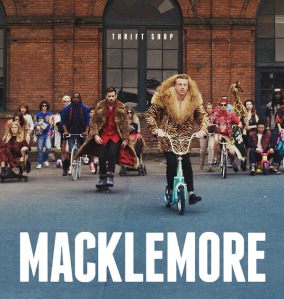
It would be great if thrift stores coordinated their intakes in order to sort and present their clothes better. The problem is that shops that promise a pleasant customer experience tend to have higher prices. And vice versa (see relevant blog post).
The truth of the matter is that second-hand will never be for everyone for every thing they need. Clothing degrades, styles change, and people like new things. It is important to take a look at the problems with how we make clothes now and solutions that are already being implemented.
So why are most fabrics environmentally damaging?
Nylon – non-biodegradable and energy-intensive. Creates nitrous oxide, a greenhouse gas 310 times more potent than CO2.
Polyester – non-biodegradable and energy intensive as well! Polyester also requires lots of water for cooling and lubricants.
Rayon– made from wood pulp. Rayon is often made from water-hungry eucalyptus and is treated with harsh chemicals.
Cotton– Cotton uses 2.5% of the world’s cultivated land and 16% of the world’s insecticides.
In addition, dyeing is extremely water-intensive. Unfixed dye and dye fixatives (often heavy metals) wash out of garments and can end up in rivers. Bleached fabrics and treated fabrics (easy care, crease resistant, etc.) also use harmful chemicals (which also end up in the water).
So, what is better?
Organic cotton– Organic cotton uses less water and doesn’t use the chemicals that harm workers, consumers, and ecosystems.
Hemp- Yes, I know I sound like a super hippie when I write this (perhaps I am?). Hemp produces 250% more fiber than cotton. It is easy to cultivate and, because it sheds it leaves throughout the growing season, hemp helps enrich the topsoil. Although I haven’t ever bought hemp clothing, the internet tells that hemp is soft and comfortable these days.
Bamboo- Bamboo is hypoallergenic, absorbent, fast-drying, fast-growing, and naturally anti-bacterial. There are concerns about the chemicals used in processing bamboo, but it is still better than conventional fabrics.
Linen- Linen, from flax, needs fewer chemical fertilizers and pesticides than cotton, so it is a better (but not the best) option.
From my end, I’ll keep buying and supporting second-hand clothing. The fabrics from used clothes have done 0 environmental damage (on their journey from the last owner to me) and are cheaper than sustainable fabric options. But if you do want something new, watch out for organic fabrics, hemp, bamboo, and linen.
Sources
- Details on conventional fabrics – http://www.greenchoices.org/green-living/clothes/environmental-impacts
- Details on sustainable fabrics- http://www.greenchoices.org/green-living/clothes/more-sustainable-fabrics
- Information on hemp –http://www.earthfriendlygoods.com/index.php?dispatch=pages.view&page_id=13
- Why cotton is so harmful- http://rodaleinstitute.org/chemical-cotton/
- Organic Cotton- http://www.huffingtonpost.com/david-dietz/organic-cotton-sustainable-fashion_b_3562788.html
Additional
- Here’s just a cool video that shows how fabric is made. It’s a pretty involved and fascinating process.



